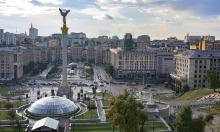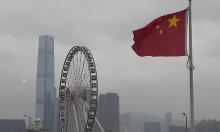NASA capsule crashed into Utah's desert
A NASA capsule carrying pieces of the sun hurtled out of control before smashing into Utah's west desert Wednesday, an almost-200-mph crash landing that could reverberate through the nation's troubled space agency.
After five years of training for the expected midair catch, Hollywood stunt pilots were reduced to flying over the crash site to get a closer look at the damaged capsule, which was carrying solar particles.
NASA officials were trying to determine why the parachute failed to deploy after the capsule came screaming into the atmosphere over Oregon at almost 25,000 mph. Scientists wondered how much of their precious cargo can be salvaged.
"What you have here is a component failure," said Chris Jones, director of solar-system exploration for NASA's Jet Propulsion Laboratory. "We don't know which one," informs The Salt Lake Tribune.
According to The Seattle Times fifteen months from now, University of Washington astronomer Donald Brownlee will be in the Utah desert where the Genesis space probe crashed yesterday, praying for a softer landing. Brownlee's Stardust spacecraft, the culmination of nearly three decades of work, is scheduled to hurtle back to Earth on Jan. 15, 2006, carrying dust from a comet - and relying on the same type of parachute system that failed so spectacularly on Genesis.
"Parachutes are one of the simplest things on the whole spacecraft," he said. "Usually, they're extremely reliable, but these things are made by people and they will never be 100 percent foolproof."
The catastrophic descent left Genesis buried halfway underground. The container inside the capsule had collected billions of solar ions blown by solar wind on to wafers of silicon, diamond, sapphire, gold and other materials, in effect a "fossil record" of the sun.
It is the first extraterrestrial matter to be returned to Earth by spacecraft since the U.S. Apollo and Soviet Luna missions brought back moon rocks in the 1970s.
A recovery team that includes Genesis project members was dispatched to the crash site yesterday afternoon to comb the wreckage. Mission members said caution was needed because of possible dangerous gases inside and unexploded pyrotechnic devices meant to deploy the parachute.
Scientists hope to salvage disks broken on impact that held billions of charged solar atoms. "There was a big pit in my stomach," said physicist Roger Wiens of Los Alamos National Laboratory, which designed the atom collector plates. "This just wasn't supposed to happen. We're going to have a lot of work picking up the pieces."
It was uncertain whether the capsule could be brought quickly to a clean room for inspection, reports Toronto Star.
Subscribe to Pravda.Ru Telegram channel, Facebook, RSS!





